
Visual Aids Centre, staff, Jean Medhurst, film library. Archives Office of Tasmania. CC-BY-NC.
From America to Europe, by way of Australia and Korea, film DIY has survived and is taking on the world. First there was the advent of video, then came digital technology and its implementation in cinemas. Over the past few decades, due to the commercial interests involved, the electronic image gradually replaced celluloid, thus reducing the opportunities of those who wish to continue working with photochemical processes. But the demise of the industrial sector (the closure of commercial film laboratories, cessation of the production of film and equipment) is being countered by ingenuity and strength in unity. The reappropriation of tools, the dissemination of knowledge, and collective organization have brought about a revival led by artists interested in analogue film, who have joined forces in artist-run labs.
On Sunday 28 February, Xcèntric presents a programme of films by Daïchi Saïto, a specific case who illustrates a global phenomenon. Saïto is a Montreal-based Japanese filmmaker, whose work is firmly grounded in hands-on work with analogue film and photochemical processes, and for whom the artist-run lab Double Negative has played a crucial role. Double Negative is one of the many collectives of its kind scattered throughout the world that are allowing artists to keep working with a medium that has by no means run out of steam, even if the industry says otherwise.
It is important to note that this revival has nothing to do with nostalgia: it is not a return to analogue, but the desire for the coexistence of formats with different expressive possibilities. Ultimately, it is an act of resistance against an industrial strategy that has become particularly aggressive in recent years, with the digitisation of cinemas and the virtual elimination of 35 mm film duplication.
Where they come from
The particularities of filmmaking (which requires expensive material and equipment) led to the emergence of the first cooperatives in the sixties in the United States and Europe, particularly among experimental filmmakers who worked “outside the norm” or practiced activist filmmaking The London Filmmaker’s Coop, founded in 1966, was amongst the first to set up an artist-run lab (their equipment is now in the hands of no.w.here). A particularly interesting case is Canadian collective LIFT (Liaison of Independent Filmmakers of Toronto), which started operating as a cooperative 1981 and worked exclusively with celluloid until 2006, when it expanded to video. Its current director Chris Kennedy (who is also a filmmaker) describes the fruitful coexistence of film and video at LIFT today: “we have worked hard to update some of our older equipment to take advantage of digital tools. A couple of examples include our HD-to-Film output room which adapts an Oxberry Animation stand, using Arduino to control the machine, and our fully analogue JK Optical printer with a new digital sequencer that runs off a little a little raspberry pi computer. However, a key part of the strategy has been to not throw anything away and to seek out any film stocks we could find to keep people actively engaged in filmmaking.”
But beyond these cooperatives that emerged when celluloid was still the norm, the boom in artist-run labs came in the nineties, when analogue film came under threat. Netherlands-based Studio Een, for example, was born when three students salvaged the film equipment that their school was going to throw out when switching to video, and became the first in a network of labs that made use of materials that cultural institutions and companies were starting to see as junk: the tools of filmmaking.
L’Abominable, one of the most solid and exemplary artist-run labs, also appeared during that first boom in the nineties, when a project that had started in Grenoble revealed a vital need to preserve an entire way of working. Nicolas Rey, one of its founders, explains: “L’Abominable was founded in 1996 by ten filmmakers who had worked at the MTK lab in Grenoble the previous year. After its first year, the MTK workshop was swamped by requests coming from people in Paris, Geneva, Brussels, Nantes, Le Havre, etc., who wanted to go and work with us. So we organised a big meeting and said: ‘our small lab can’t take in so many people, but we can help you set up labs in your home cities; there are enough of you to join together and find a space to work and basic developing equipment.’” It was the start of a network of film labs in France, Belgium, and Switzerland that we called Ebouillanté”.
Proving that necessity is the mother of invention, similar initiatives began to spring up in other parts of the world for the same reasons. This is how Richard Tuohy describes the start of Nanolab in Australia: “in about 2005, with the end of Kodachrome, my partner Dianna Barrie and I tried to find somewhere in Australia that would take on processing of the new Ektachrome super 8 film that Kodak introduced as a replacement. Exasperated, we decided to try processing it ourselves. We then immediately received requests to process other people’s Ektachrome super 8. That is where Nanolab started.” This small lab which began as a personal project and a source of income for two artists eventually gave rise to the Artist Film Workshop (AFW). “While we do our own work at Nanolab and also take on artists in residence there, AFW has managed to create the context for the appreciation and practice of cine film experimentation that we had hoped for,” says Tuohy, who started filming in Melbourne’s lively super-8 scene in the eighties. Similar initiatives appeared around the world, including Filmwerkplaats in Rotterdam, LaborBerlin in Germany, Átomo 47 in Portugal, Filmkoop Wien in Austria, and many more that can be found on the website www.filmlabs.org.
The internet played a crucial role in this last wave of artist-run film labs, as a means for knowledge sharing and dissemination, for detecting potential members, and even for acquiring equipment. As well as offering internet users a way to find a lab near them, the portal www.filmlabs.org allows listed labs to show recent works produced by their members and share technical tips. How-to guides can also be found online, such as the classic fanzine created by American animator Helen Hill in the early 2000s, Recipes for Disaster. A Handcrafted Film Cookbooklet, which is the epitome of DIY in spirit and execution and shows you everything you need to get started, and To Boldly Go: A Starters Guide to Hand Made and D-I-Y Films, edited by Esther Urlus, Dutch filmmaker and founder of the Filmwerkplaats Rotterdam. Knowledge made available to anybody who wants to use it.
Closer to home, there are currently two artist-run labs in Barcelona: Laboratorio Reversible and Crater Lab. The first emerged from the efforts of a diverse group of individuals who decided to get together and learn to work with film, and the latter is the result of the Crater Collective expanding and opening up to new members.
How they work
A key aspect of artist-run labs is their horizontal, collaborative structure. As Esther Urlus from Filmwerkplaats Rotterdam explains “as an association, we try to maintain a non-hierarchical operational structure, meaning that all members are entitled to share tasks and responsibilities for the collective. Becoming a member doesn’t just mean you can work in the facilities, it also means that you commit to organising activities such as workshops, screenings, symposiums, meetings, etc., and to sharing the workload generated by the maintenance of our physical space, machines and equipment, and so on.”
This modus operandi is shared by all these labs, which are generally financed through membership fees and admission charged for public activities such as workshops and screenings. When it comes to space, there are more differences between the labs: some collectives rent a space –Daïchi Saïto says that Double Negative was based in his own apartment for a time–, while other labs such as Átomo 47 inOporto and Filmwerkplaats are hosted by arts institutions. As Urlus says, Filmwerkplaats “is in a lucky position, because as an association we are hosted by WORM Rotterdam, an organisation and art-space where visual arts, music, and film-related events take place.” Tuohy explains that in Australia they have to deal with high rents and a lack of public funding, while LaborBerlin began in a public swimming pool that had been converted into studio space for artists and collectives.
Artist-run labs generally practice “learning by doing”: founding members teach themselves the necessary technical knowledge, and as the lab grows they impart workshops to teach new arrivals how to use equipment and material. Community building is another important aspect for artist-run spaces at all levels, from the broader international community of labs around the world, to the connection with local artists who share similar visions. Laboratorio Reversible is an interesting case in this sense, because from the outset it decided to become part of the fabric of life in Poble Sec, the neighbourhood where they are based. They say that “when we go out and shoot, we tell people that we live in the neighbourhood, and we explain the project to them. We ask if we can film them, make a portrait. And in exchange for their generosity we organise outdoor film sessions in an abandoned lot known as El Solar de la Puri and invite them to bring their home movies, if they have any. These screenings are organised as a remix, and many locals come and participate. Heartfelt discussions are generated about all kinds of things: family super-8 films, found footage, the portraits of people and spaces in the neighbourhood, Hollywood comedies…” This approach has crystallised in the veCINES project, which aims to take all of this a step further.
Where they’re going
As the network of labs grows, it seems that all is not lost for celluloid. Chris Kennedy from LIFT is convinced about the analogue revival “is represented in everything from vinyl to 3D printing to knitting circles. In fact, film stock sales at LIFT have more than doubled since 2013, largely in super 8 (where music videos, commercial makers, home movies and experimentalists intermix in our client base), but we’ve also seen the use of our darkroom increase six-fold in the past four years, so it’s clear that experimental practice in film is still going strong. With the introduction of Kodak’s new Super-8 camera in late 2016 and the imminent supply coming from Film Ferrania, we expect that film will be a vital part of our members’ practice for at least the next five or ten years.”
And looking beyond film supplies, members of some artist-run labs are working towards total self-sufficiency and creating their own emulsions, for example Kevin Rice (founder of Process Reversal lab in the United States) and Esther Urlus, who says: “my goal to make my own ‘colour stock’ means I have a better chance of finding solutions from the early years of film, when there were lots of experiments and everything was documented. It was a kind of open source, open access media. I’m not trying to find a way to make ‘proper’ colour stock with the realistic nature of contemporary film material. In reinventing emulsion and colour film with the helping hand of technical publications from early cinema and photographic experiments, I’m hoping to achieve findings that are ‘something completely different and unique’. In that sense I really think there are still innovations to make in the analogue film medium.” Urlus also works with Filmwerkplaats in the RE MI European cooperation project for the creation, preservation, and circulation of technical knowledge of analogue film, along with LaborBerlin and MIRE laboratory in Nantes.
To be continued…

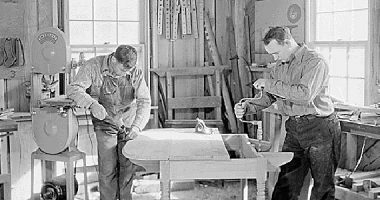
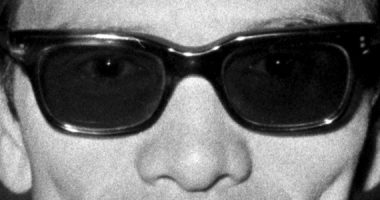
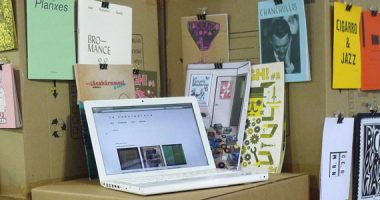
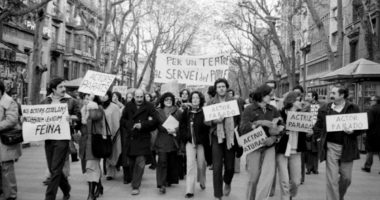
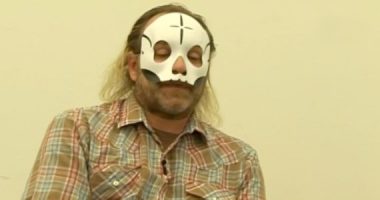
Leave a comment